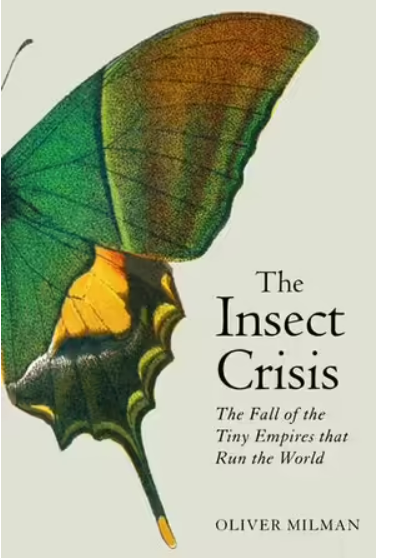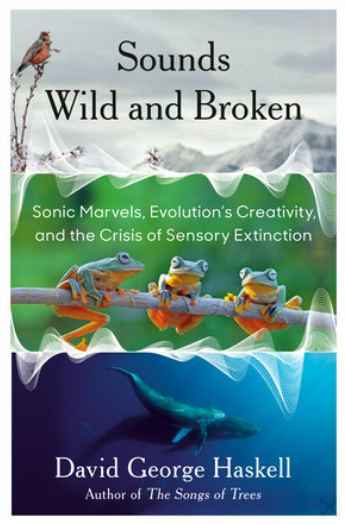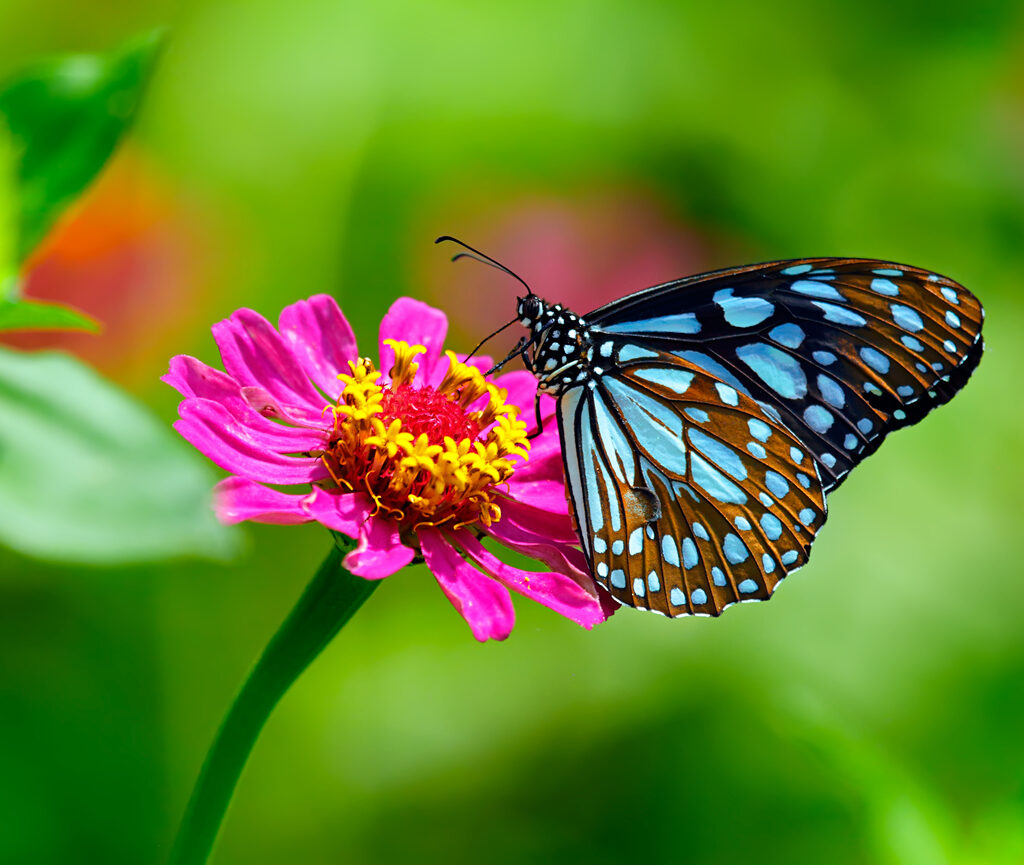Review: The Insect Crisis by Oliver Milman, Sounds Wild and Broken by David George Haskell
In the 1990s we used to drive in the country, from the city and beyond the Great Dividing Range into flat farmland, and the front of the car would be covered in insect hits. It’s rare now to be bothered by insects on the windscreen, or to see the swarms of summertime insects we used to see.
In Oliver Milman’s alarmingly riveting book, he tells us that there has been a 75 percent decline in insects worldwide in ‘protected areas’, both in populations and species, in the period 1989-2017. A Danish researcher had a more scientific version of the windscreen experience, in the same piece of Danish countryside over 20 years and found an 80 percent decline. In a Puerto Rico rainforest, the figure was in the order of 80-90 percent.

Three quarters of animal species on Earth are insects. Their biomass is twenty times the combined mass of all other animals. Unlike the dinosaurs, they survived previous mass extinction events quite well. A human-induced crisis, as Milman labels it, is the first time they have really been hit hard. And this is bad not just for insects. They are indicators of the ecological health of the planet.
Most of us don’t understand the totality of what insects do for us, in their specialisation and interconnectedness to the rest of nature. As David George Haskell, another insect apologist, writes, as well as simply being an exemplar of the richness of the natural world, they have niche relationships with flowering plants and are vital for pollination, as the recent panic over bees indicates. Milman comments that while the loss of polar bears would be undoubtedly tragic, it wouldn’t have much impact on human affairs, whereas mass insect loss would be a catastrophe for agriculture (Dreams of robot bees doing the job are simply unrealistic.)
For those squeamish about creepy-crawlies, or for those in tropical areas, less flies and mosquitos might seem like a positive result, since they spread disease to humans, but flies, for example, pollinate cocoa trees, so are therefore vital for the production of chocolate. Flies also do the cleaning up. And, ironically, insects such as flies and mosquitos are likely to benefit, not suffer from, increased urbanisation and global warming.
For other insects, climate change is happening too quickly for adjustment. Another cause of loss is increasingly monocultural agriculture. Ironically, while we need insect pollinators for agriculture, monoculture and a tidying of the countryside is bad for them, and for the birds that feed on them. The loss of wild road verges, hedgerows, wildflower meadows and strips of bushland all contribute. Ironically, again, some cities are more habitable for insects and birds because of the variety of plants found in parks and gardens. Insect loss is also attributed to agrochemicals. In France, a third of birds have disappeared, as their food sources are affected by the application of pesticides and herbicides, the use of which agrochemical companies still desperately argue for.
Birds and insects feature heavily in Haskell’s intriguing book about biodiversity and the sounds of nature. He has previously written in detail about the surprising interconnectedness of forests. Here he turns his attention to the sounds of the animal word that are under threat, and typically unloads a torrent of amazing information.

His book is a cavalcade of descriptions of auditory sensations, including the world beyond human ears. The human ear is amazingly complex, and filters out volume and frequencies, so as we are not bombarded. Animals take up niches in sonic frequency and time-of-day, to avoid competition for the same wavelength and be heard amongst the din of a forest. Sparrows in California have regional dialects in their songs, much like whales do. The resulting fecundity of sound rivals the visual variety of animals. Rather than an arms race, it’s an arts race.
Birds compensate for the noise in cities by raising their volume. But some animals can’t compensate. Whale numbers are declining in some places because of the noisiness of shipping. Whales need sound for hunting and communication. Sounds travel further in water, and whales use a ‘lens’ of water – a layer in the ocean – to send calls thousands of kilometres, but in this soundscape large ships add deafening and confusing noise pollution. Even worse is seismic surveying – blasts of sound aimed at the ocean floor to map oil deposits. For whales, this is like having a jackhammer in your living room would be for humans. Noisy soundscapes are also a problem for marine life at the level of recreational fishing and small outboard motors.
It is possible to design ships to be less noisy, and to slow marine speeds. And we can stop oil drilling in the oceans, which is bad for other reasons. For our six-legged friends, untidier gardens, more variety, more flowers, buying organic produce, less light in cities, less pesticides – all these are helpful. As is being aware of how vital they are for biodiversity and our own survival.
Nick Mattiske blogs on books at coburgreviewofbooks.wordpress.com and is the illustrator of Thoughts That Feel So Big.













